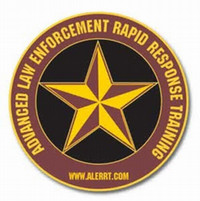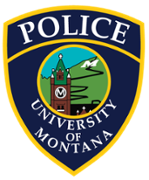Emergency Preparedness
Safety and Emergency Preparedness at the University of Montana
Campus Safety is Everyone's Business
The University of Montana is dedicated to providing a safe and secure environment for everyone on our campuses. The University of Montana has its own full-service police department. UM police officers cannot be everywhere, so we depend on our community members to be our eyes and ears. It is vital that you trust your instincts and report anything that does not seem right. You do not have to believe that a crime has been committed to call the police. If something seems suspicious, out of place, or just odd, you should call. A UM police officer will gladly check it out. See how to report suspicious activity below.
University Police
NON-emergency EMERGENCY
406-243-6131 406-243-4000 OR 911
How to Report Suspicious Activity

Emergency Preparedness means being ready.

It takes all of us to create and sustain an effective emergency preparedness system. In an emergency it is essential to have a response plan. First responders will be coming to help, but you are an immediate responder. What you do matters! Immediate responders are those who are present when the emergency occurs and they can make a difference. In case of an emergency, the most important advice we have is this:
- Stay calm
- Know your emergency action plan
- Assess the situation
- Decide which response protocol is appropriate for your safety
- Help others as necessary while maintaining your own safety
- Obtain as much information as possible without compromising your own safety
- Provide information and guidance to first responders
- Stay alert and flexible in your response
Utilizing a planned and practiced response to any incident is the foundation of a safe campus. The University of Montana utilizes the I Love You Guys Foundations, all hazards repose protocol. This Standard Response Protocol (SRP) is action based, flexible, and easy to learn and use. It organizes tactics for responding to any hazard the campus may encounter and helps to ensure everyone is on the same page. This includes weather events, fires, accidents, and any other threat to personal safety. The (SRP) utilizes (5) standard responses:
- HOLD (New)
- SECURE (formerly LOCKOUT)
- LOCKDOWN
- EVACUATE
- SHELTER
For more information on these standard response protocols use the following links:
- All hazards response protocol student / staff handout (English)
- All hazards response protocol student / staff handout (Spanish)
- All hazards response protocol poster (English)
- All hazards response protocol poster (Spanish)
Response Enhancements
Emergency situations can change quickly. It is important to know your response enhancements. Stay flexible in your response and keep in mind that events unfold rapidly. What you do matters! No matter which response protocol you are prompted to use, be prepared in incorporate supplemental response enhancements as necessary: (SEE ALSO IMMEDIATE RESPONSE TO AN ACTIVE SHOOTER EVENT)
 AVOID, DENY, DEFEND
AVOID, DENY, DEFEND
AVOID starts with your state of mind
- Pay attention to your surroundings.
- Have an exit plan.
- Move away from the source of the threat as quickly as possible.
- The more distance and barriers between you and the threat, the better.
DENY when getting away is difficult or maybe impossible
- Keep distance between you and the source.
- Create barriers to prevent or slow down a threat from getting to you.
- Turn the lights off.
- Remain out of sight and quiet by hiding behind large objects and silence your phone.
DEFEND because you have the right to protect yourself
- If you cannot Avoid or Deny be prepared to defend yourself.
- Be aggressive and committed to your actions.
- Do not fight fairly.
- DEFENSE AGAINST TWEETED VIOLENCE & PROTECTION FROM DANGEROUS SITUATIONS, IS ABOUT SURVIVAL.
AID yourself and others when safe to do so
- Control bleeding with direct pressure or tourniquet application.
- Pack wounds when necessary.
- Use AED's as appropriate.
- Treat for shock
The University has a complete Emergency Operations Plan that covers in detail how we respond to human-caused emergencies and natural disasters.
If you are interested in taking a more active role in developing and implementing an emergency plan for your area, please contact chuck.emnett@mso.umt.edu with the subject line: Emergency Operations Officer.
Communication Tools & Functional Annex Information
Emergencies may range from inclement weather to a chemical spill or a reported shooting or fire. UM has a variety of tools to communicate with the public during emergencies. Depending on the type of emergency, we may use some or all of the tools available to communicate with faculty, staff and students. In addition to these communications tools, the university's emergency operations plan (EOP) provides guidance in responding to different emergencies by way of functional annexes. These annexes provide instruction on procedures to be taken during natural and manmade disasters.

